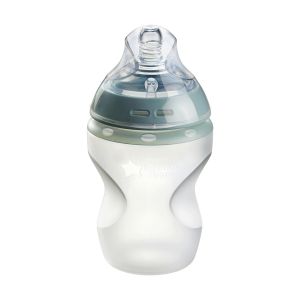
This is a demo store. No orders will be fulfilled.
Subscription orders can be cancelled at anytime. Standard delivery will be charged on each subscription order. Find out more about subscriptions.
They’re easy and fuss free
Your products are automatically sent to you
You save when you sign up for a subscription
You can cancel at any time
Latching on - and maintaining a comfortable latch - is a key part of a successful breastfeeding routine. But the 'perfect' latch can sometimes be a daunting and confusing thing for new parents to figure out.
So, let's demystify this breastfeeding lingo, and run you through everything you need to know about latching on while breastfeeding.
Latching on is the process of getting your little one to suckle around your nipple and areola so they can remove breast milk from your boobs and breastfeed comfortably.
Think of your areola as a target for baby's mouth and try to get them right in the bullseye! Your baby should be pressing against this target to trigger the milk flow and ultimately establish a strong breast milk supply for your feeding journey.
If your baby is latched on properly, breastfeeding shouldn't cause you pain and your nipples won't become cracked or painful.
Getting the hang of a good breastfeeding latch that's comfortable for you both can be tricky at first.
It can take time and perseverance to get it all going smoothly. Even if you know what latching on is, you may still struggle when it comes to knowing if you've got it right or not.
Here's a step-by-step guide to getting a good latch:
If you think your baby isn't latched correctly or if your nipple hurts when they're nursing, you can slide your finger into their mouth to break the hold they have on your nipple. You can then try again and alter your position to achieve a better latch that's more comfortable.
Don't forget, it's not supposed to be painful. You and your baby should be comfortable, and you should be able to see your little one sucking, swallowing, and breathing.
If you've followed the steps we've covered, you should be able to see some clear signs that your baby has a good latch on while breastfeeding. These include:
If you're struggling or feel unsure at any stage, don't be afraid to ask for help. You can get in touch with your midwife or a lactation specialist. They'll be able to help you out with any breastfeeding-related issues.
Getting a good latch can be more difficult for those with bigger boobs so it's important to get into the right position. It should become easier with time, but if you're finding it hard, try giving these breastfeeding latch tricks a try:
If you're still struggling to achieve a good latch or are concerned that your baby may be tongue-tied, consult your doctor or health visitor for advice.
Using the deep latch technique prevents damaged, sore nipples and can help your baby feed more easily. A deep latch can be achieved in any breastfeeding position. But it can help to sit up straight and use pillows for support.
Here's a step-by-step guide to the deep latch technique:
Most babies will automatically release and un-latch from the breast on their own when they've finished feeding and are feeling full.
But if your baby hasn't released, isn't suckling anymore, and seems to have finished feeding, you can release their latch by gently slipping a clean finger in the side of their mouth and moving it a quarter turn.
You can tell that a baby is feeding when they're latched on if there's movement in their lower jaw or around their ears and temple area.
Most babies feed faster at the start and slow down towards the end of a feed, at which point you may see they become more relaxed in their hands and shoulders.
A shallow latch is when a baby isn't opening their mouth wide enough to nurse without causing you pain. If you're experiencing a shallow latch: